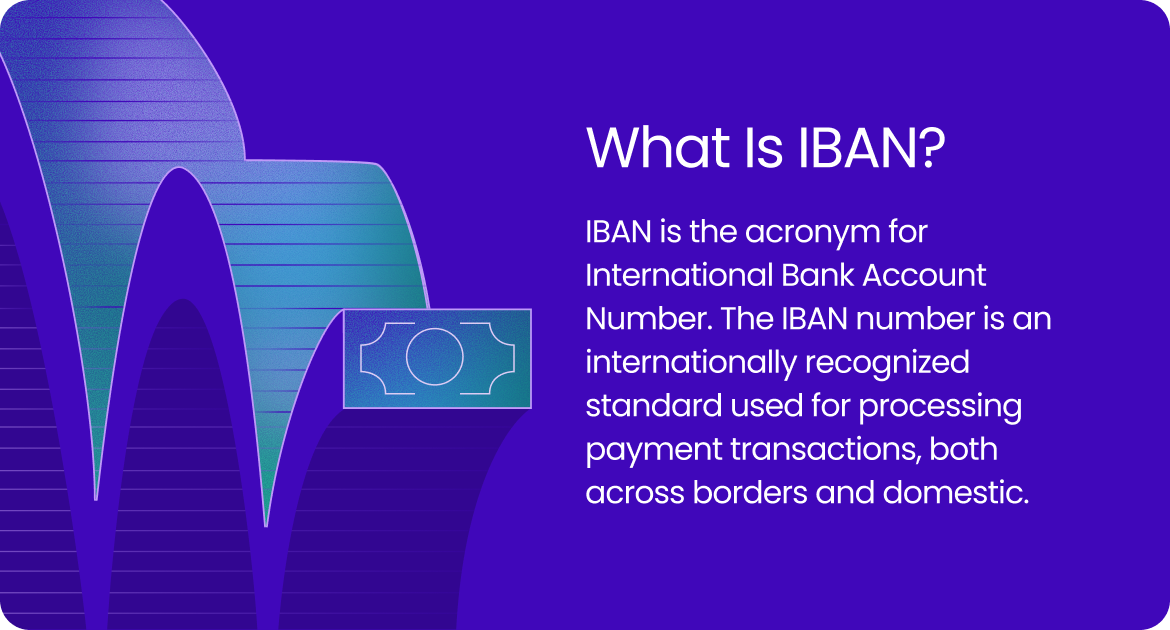As a business owner or human resources manager, you may come across the term "IBAN" in the context of international financial transactions. An IBAN, or International Bank Account Number, is a standardized code used to uniquely identify bank accounts across borders, facilitating accurate and efficient processing of international payments. Understanding and correctly using IBANs is crucial for ensuring that funds are transferred to the correct accounts, reducing errors, and complying with global banking protocols.
For example, if your company needs to pay a supplier in Germany, you would require the supplier's IBAN to ensure the payment reaches their specific account without delays or errors. The IBAN includes details such as the country code, bank code, and account number, all formatted in a standardized way to streamline international transactions.

How To Find Your IBAN number
- Check your mobile banking app to find your bank account number and IBAN.
- Some bank statements will contain your IBAN.
- Find the codes and account number on your bank's website or by asking your branch directly.
- Find an online IBAN calculator to get the alphanumeric characters specific to your country.
- You can also go to the SWIFT website to find the IBAN for each country.
IBAN Examples
The IBAN structure is defined in ISO 13616-1 and consists of a two-letter country code, followed by two check digits and up to thirty alphanumeric characters for a BBAN (Basic Bank Account Number). The latter has a fixed length per country and within it a bank identifier with a fixed position and length per country.
Importance of IBAN
Cross-border money transfers using the IBAN system is recognised by other major countries where the standard is not implemented such as Canada and the USA. The registration authority for the IBAN ISO standard is SWIFT, the Society for Worldwide Interbank Financial Telecommunications network. Like the SWIFT code, IBAN was created by worldwide financial system participants for financial messages and transactions.
How Does an IBAN Work?
IBAN enables financial institutions to join international and national payment systems, allowing them to help customers send or receive money transfers domestically and internationally. This capability is particularly useful in managing international transfers.
When using IBAN for SWIFT payments, there is no requirement for the payment service provider to be established in a specific country, simplifying the process for customers to receive an international transfer.
IBAN vs BBAN
- BBAN (Basic Bank Account Number): This identifier uniquely identifies an individual account at a specific financial institution within a particular country. It includes the bank identifier of the financial institution servicing the account.
- IBAN (International Bank Account Number): This is the expanded version of BBAN, designed for international use. It also uniquely identifies an individual account at a specific financial institution in a specific country, extending the BBAN for global transactions.
IBAN vs BIC (Business Identifier Code)
The business identifier code (BIC) is the standard specifying the elements and structure of a universal identifier code. International banks use BIC for transferring money with each other–addressing messages, routing business transactions and identifying business parties.
The BIC is used for financial and non-financial institutions, where such an international identifier is required to facilitate automated processing of information.
There are two types of BICs: Connected BICs with access to the Swift network and non-connected BICs with no access and used for reference purposes only. It is not to be confused with bank identifier code, sometimes referred to as the SWIFT code.
IBAN in a Nutshell
- IBAN is important for identifying bank accounts and streamlines both international and national payments, offering an effective alternative to traditional banking methods.
- By adopting IBAN, particularly for SWIFT transactions, banks can reduce costs in their money transferring processes.
- The use of IBAN allows banks to remain competitive with the rise of Banking-as-a-Service and fintech innovations in the worldwide interbank financial telecommunication sector.
- However, concerns about the extensive use of customer data and challenges for non-banking entities in accessing certain payment systems, like designated payment systems, are notable.
IBAN FAQs
What is an IBAN number?
IBAN stands for International Bank Account Number. It is the ISO 13616 international standard for numbering bank accounts. In 2006, the International Organization for Standardization (ISO) designated SWIFT as the Registration Authority for ISO 13616.
What is the IBAN used for?
The IBAN facilitates the communication and processing of cross-border transactions. It allows exchanging account identification details in a machine-readable form.
What is a bank identifier?
The identifier that uniquely identifies the financial institution and, when appropriate, the branch of that financial institution servicing an account
.svg)
.svg)
.svg)
.svg)
.svg)





.svg)




.png)

.svg)



















.svg)